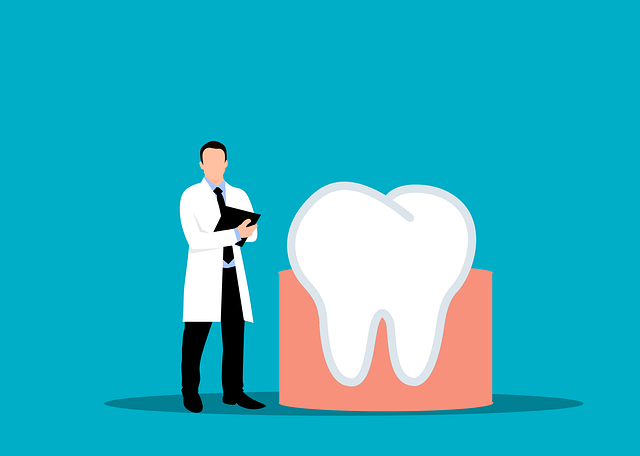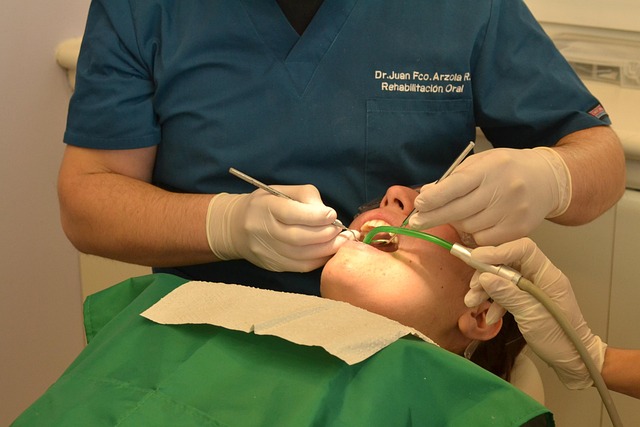Malpractice insurance for dentists is crucial protection against legal claims, covering costs beyond settlement. Dentists should carefully review policy limits, exclusions, and deductibles to align with their practice's risks, including complex treatments. Regular reviews are essential as practices evolve and new guidelines emerge. By understanding coverage nuances and industry regulations, dental professionals can mitigate risks and foster patient trust through tailored malpractice insurance.
Protect your dental practice from legal claims with a robust malpractice insurance policy. In today’s world, understanding the risks associated with dentistry is crucial. This article delves into essential aspects of malpractice insurance for dentists, including why claims happen, choosing the right coverage, policy limits, claim prevention strategies, and navigating the claims process. By implementing these strategies, you can mitigate risks and ensure the financial security of your practice.
- Understanding Malpractice Insurance for Dentists
- Why Dental Malpractice Claims Happen
- Choosing the Right Coverage
- Policy Limits and Considerations
- Claim Prevention Strategies
- Navigating the Claims Process
Understanding Malpractice Insurance for Dentists

Malpractice insurance for dentists is a crucial component in protecting their practices from potential legal claims. This type of insurance provides financial coverage in case a patient files a lawsuit due to perceived negligence or substandard dental care. Dentists should understand that malpractice insurance isn’t just about settling lawsuits; it also includes investigative costs, court fees, and legal defense expenses.
Choosing the right policy involves evaluating coverage limits, exclusions, and deductibles. Dentists need to consider their practice’s specific risks, such as high-risk procedures or complex treatments. Regularly reviewing and updating insurance policies is essential to ensure adequate protection as the dental field evolves and new guidelines emerge.
Why Dental Malpractice Claims Happen

Dental malpractice claims arise from a variety of reasons, often stemming from errors or omissions during dental procedures. These claims can occur due to negligence, such as incorrect diagnoses, improper treatment plans, or mistakes in executing procedures. They may also result from failure to obtain informed consent from patients, inadequate communication about treatment options, or misapplication of standard dental practices.
One significant factor contributing to malpractice claims is the increasing complexity of dental procedures and technologies. As treatments become more advanced, so does the potential for errors. Malpractice insurance for dentists becomes crucial in protecting against these risks by providing financial coverage should a claim be filed. This insurance is essential for maintaining patient trust and ensuring that dentists can focus on delivering quality care without undue worry about potential legal repercussions.
Choosing the Right Coverage

Selecting the appropriate malpractice insurance for dentists is a strategic move to safeguard your practice from potential legal claims. The right coverage should align with your specific dental specialty and patient care practices. As a dentist, understanding the scope of your responsibilities is key; this includes diagnostic procedures, treatment plans, and emergency interventions. Each of these areas may carry unique risks, so tailored insurance that caters to these nuances is essential.
When choosing malpractice insurance, consider not only the financial protection it offers but also its comprehensive terms. Look for policies that include specific coverage for different dental procedures, such as endodontics or orthodontics, and ensure there are adequate limits to cover potential damages. Additionally, examine the policy’s exclusions and conditions to comprehend what is not covered, allowing you to make informed decisions regarding your practice’s risk management strategy.
Policy Limits and Considerations

When considering malpractice insurance for dentists, understanding policy limits is paramount. These limits represent the maximum amount your dental practice can be held liable for in the event of a legal claim. It’s crucial to select a policy that aligns with your practice’s risk profile and potential exposure. For instance, if your practice involves complex procedures or high-risk patients, you may require higher coverage limits to protect against potential, substantial financial losses.
Policy considerations extend beyond limits. Reviewing the policy’s terms, conditions, and exclusions is essential. Understanding what’s covered, what’s not, and under what circumstances can help in risk management. For example, some policies might exclude specific types of claims or have waiting periods before coverage kicks in. Knowing these details allows you to take proactive measures to mitigate risks and ensure adequate protection for your dental practice.
Claim Prevention Strategies

Preventing legal claims is a proactive step every dental professional should take to safeguard their practice and reputation. One of the fundamental strategies in claim prevention is acquiring adequate malpractice insurance for dentists. This financial protection acts as a shield against potential lawsuits, covering expenses related to legal defence and settlements if a claim is successful. By ensuring you have sufficient coverage tailored to your specialty and practice size, you demonstrate due diligence and mitigate risks.
Regularly reviewing and updating your insurance policy is crucial. As dental practices evolve, so do the associated risks. Keeping your malpractice insurance current ensures you’re protected against emerging legal challenges specific to dentistry. Additionally, staying informed about industry regulations and best practices can help identify potential pitfalls, enabling you to implement preventive measures that deter claims before they occur.
Navigating the Claims Process

Navigating the claims process can be complex and stressful, especially for dental professionals facing potential malpractice lawsuits. The first step is to assess the validity of the claim. Malpractice insurance for dentists plays a pivotal role here, providing financial protection against allegations of negligence. If the claim is deemed valid, it’s crucial to gather all relevant records and evidence meticulously. This includes patient charts, treatment records, and any communication related to the incident in question.
The next phase involves defending one’s actions and decisions made during the initial treatment. Dentists should be prepared to explain their diagnostic and treatment procedures while adhering to industry standards. Engaging legal counsel who specializes in dental malpractice is invaluable. They can guide dentists through the intricacies of the claims process, ensuring a robust defense strategy.
